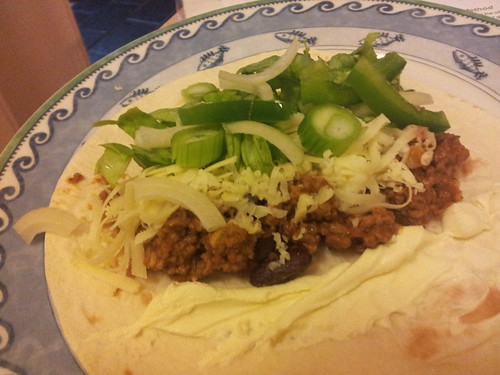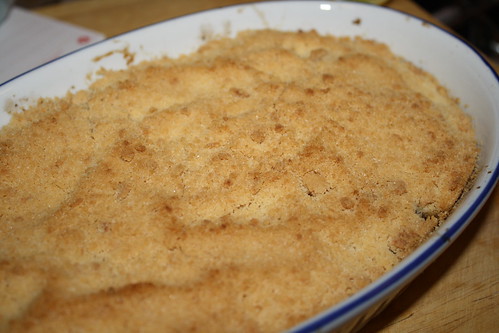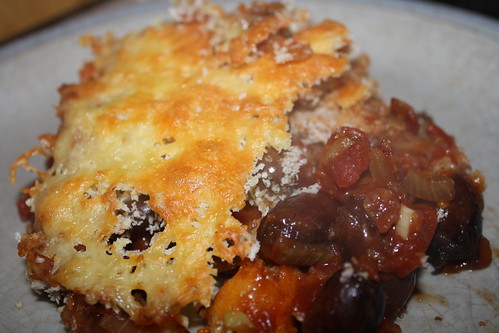Apologies for yet another Mexican themed post … but this time it’s home cooking, so if you’re not in Adelaide (or you can’t get yourself to one of the many places popping up) you can replicate a bit of Mexico in your own kitchen. Well, it might not be Mexico, but it’s Paul Merrett’s take on Mexico.
What I really liked about this chilli con carne recipe is that it doesn’t feature any hard to track down ingredients. In fact, the chances are that you’ll have most of them in your cupboard so your shopping list will be slim. What’s also novel is that Merrett serves the chilli in tortillas with all the extras. This was something we both really loved and it makes a diverting change from fajitas.
As this dish is based on beef mince, it’s important to choose a time to cook this when you can give it a good, long, slow cook. Any dish like this (think things like Bolognese sauce) needs time to mesh all the flavours together and to make sure that any raw beef or tomato flavours are fully cooked out.
Naturally, I departed from the original recipe a little …
Heat a little oil in a large saucepan, and fry off a finely sliced onion and four cloves of garlic, crushed and chopped. Add 700g (I think I actually had 680g but you get the idea) of minced beef and cook this for a bit. I didn’t bother waiting for it all to start going brown (I would have been there all afternoon) but I did wait for it to start to look a bit cooked. I then added 1 tsp ground coriander, 1 tsp paprika and chilli powder to taste (I used hot ground chillis and used somewhere between ¼ and ½ tsp and it was warmer than I expected). I then added 250mL of open rosé that I had hanging around, a generous splash of Worcestershire sauce, 1 tin of crushed tomatoes, and one concentrated beef stock jelly thing.
At this point, you need to give the pot a stir and judge whether or not you need to add a bit more water.
Rinse (and drain) a tin of red kidney beans and add these, stir everything and leave it to tick over for a good couple of hours. I didn’t need to add any salt but you may wish to adjust the seasoning.
When it comes to serving, spoon some of the chilli onto a warmed tortilla and add some sour cream, grated cheese, shredded lettuce, and some sliced onion and spring onion. Wrap and eat.
Of course, the chilli works perfectly well outside the tortilla (and, indeed, I had leftovers for lunch a couple of times) so you could always serve with whatever you normally have as a Mexican accompaniment.
I loved the fact that this recipe is based around readily available ingredients – the only things I had to buy were the beef and the kidney beans. So often Mexican recipes need 3 different types of chillis that can only be bought at Mexican specialist shops. It was super quick to put together (letting something sit on the stove is not work!) and it was tasty. Having it in tortillas was great, and something that will definitely work over summer, but if you’re making it in the depths of winter, it’s hearty and warming.
Definitely something I’ll be making again.



